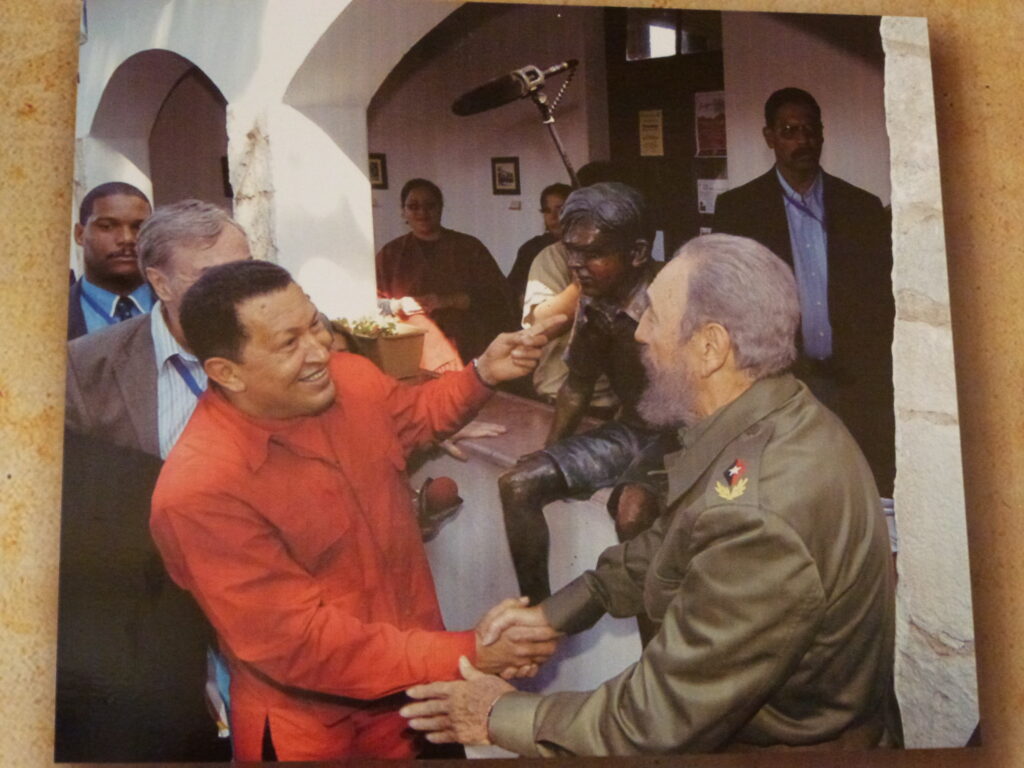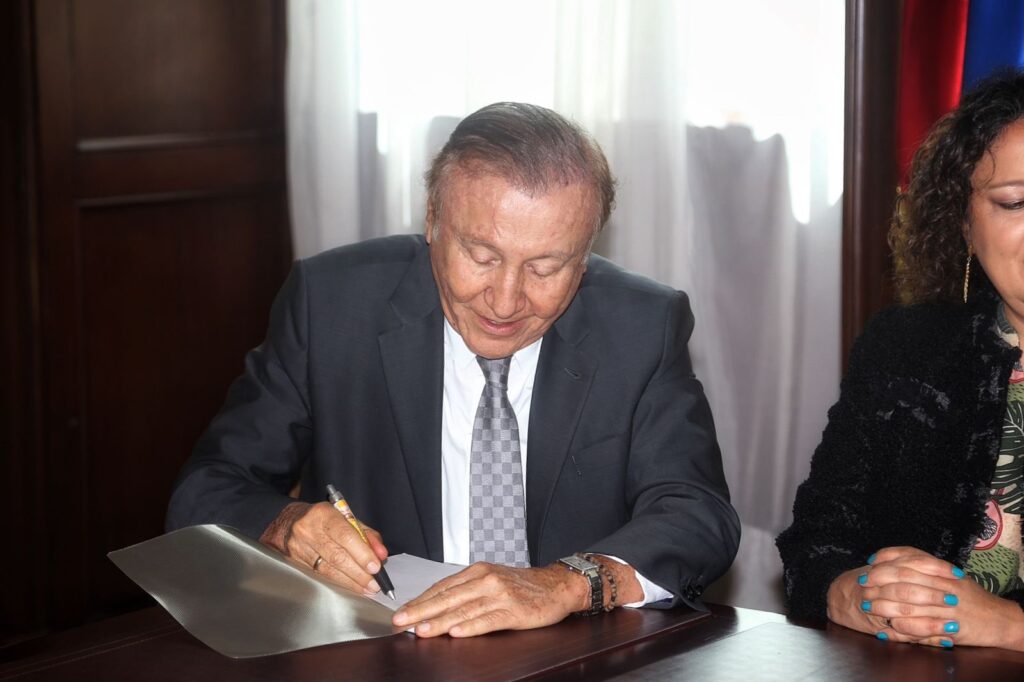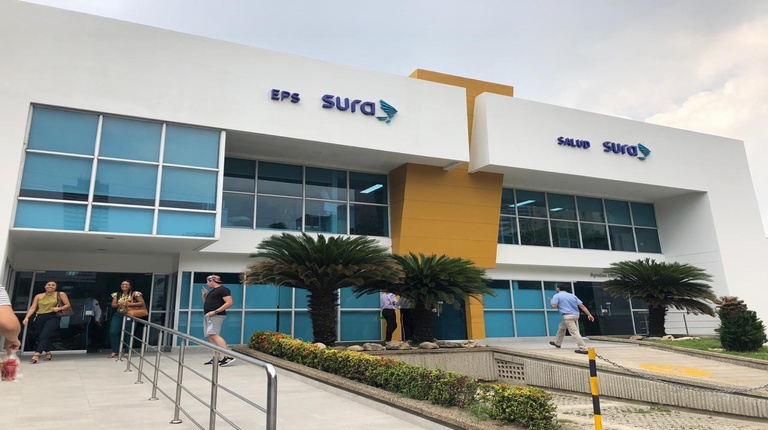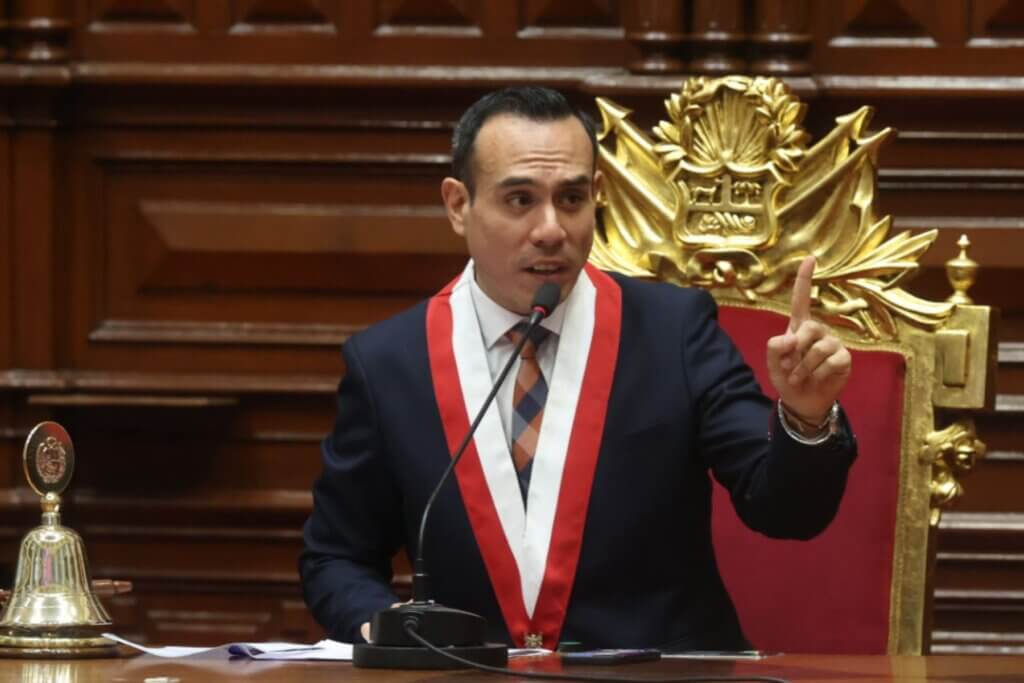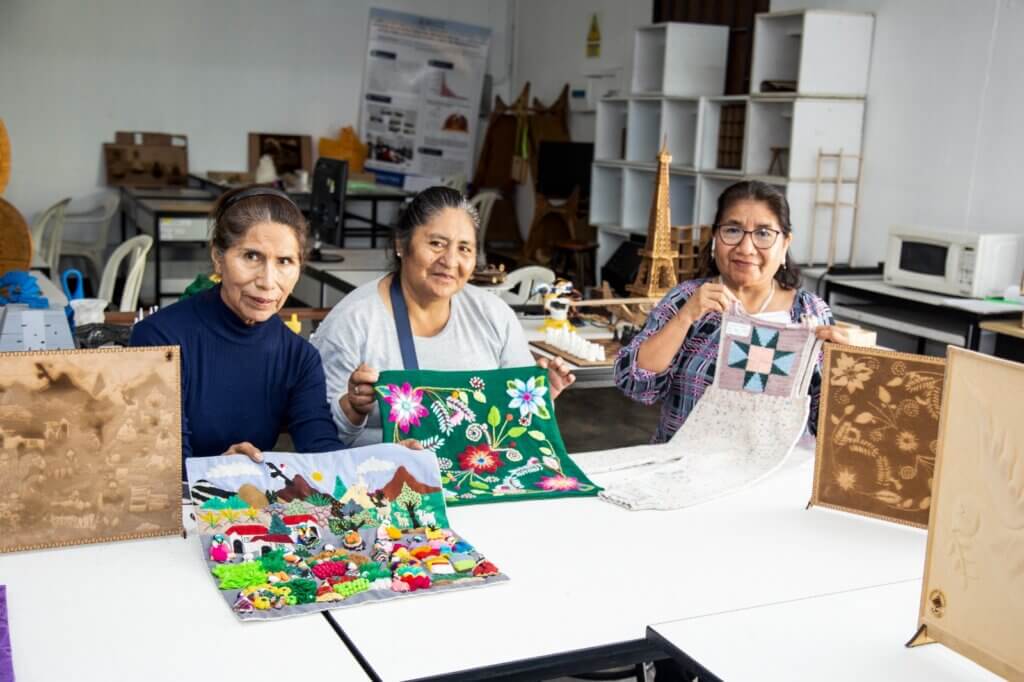Medellín, Colombia — On May 22, Luis Oswaldo Yule Palco, a leader of a peasant rights group in rural Corinto, Cauca, became the 70th rights defender killed so far this year in Colombia, according to Indepaz.
Just days earlier, Frontline Defenders and HRD Memorial, organizations that protect human rights defenders (HRDs) and honor those who’ve been killed, reported that in 2023, Colombia once again topped the list of most dangerous countries for rights defenders.
From January to December 2023, 142 of the 300 recorded killings of rights defenders around the globe happened in Colombia. Regionally, Latin America was the most dangerous place for these people, outpacing war zones like Ukraine (11) and authoritarian nations like Iran (3).
Seventy-nine percent of rights leader killings occurred in the region, with Mexico placed second globally with 30 recorded killings, followed by Brazil with 24 and Honduras with 19.
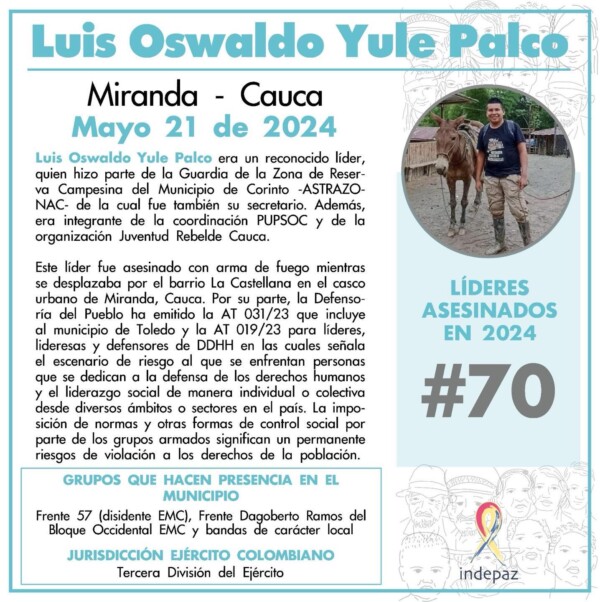
Colombia has been ensnared in internal armed conflict in one form or another since the early 1960s, and “at a time when there are more violent conflicts occurring than at any stage since the Second World War, it has become increasingly clear that HRDs are frequently targeted as a result of the vital work they do in conflict situations,” the report stated.
In Latin America, the five most-targeted types of defenders include:
- Indigenous rights (28.8%);
- Land rights (10.1%);
- Environmental rights (9.2%);
- Opponents of extractive industries and megaprojects (8.9%);
- And women’s rights defenders (5.8%).
In this sense, the most frequent violations against HRDs are death threats (36.6%), physical attacks (26.3%), surveillance (14.6%), legal actions (12.5%), and arbitrary arrests and detentions (10.8%).
Frontline Defenders and HRD Memorial collected and analyzed information on violations against rights defenders from 28 countries. They reportedly collaborated with rights organizations around the world including ACI-Participa (Honduras), Amnesty International, Comité Cerezo (Mexico), Global Witness, Programa Somos Defensores (Colombia), and UDEFEGUA (Guatemala), among others.
There are many challenges, however, to accurately report information about rights defender killings, especially in conflict zones. The report offers that “it is likely that this dataset is incomplete as partners continue to gather and verify cases,” while also mentioning that, “In some regions and countries, including Afghanistan, China, Ethiopia, Democratic Republic of Congo (DRC), Myanmar, Libya, Palestine or Sudan, the documentation of cases is highly challenging, if not virtually impossible.”
Additionally, many have gone unreported due to the dismantling of human rights groups, death threats, mass surveillance and dangers surrounding ongoing armed conflicts.
In Colombia, two main factors contributed to the widespread killings of HRDs: lack of state control and conflicting armed actors, and the presence of multinational mining companies and extractivist projects.
Throughout 2023, the presence of military and paramilitary actors prevailed in contested territories, and non-state groups continued to exercise their power through violence, thus aggravating the risk factors faced by HRDs. This resulted in a blurring of lines between state authorities and non-state armed actors where state power was weak.

Furthermore, the presence of several multinational mining companies exacerbated the dangers for HRDs. Even when projects were environmentally “green”, they were mainly driven by investments from the Global North and developed using the same extractivist models that hinder the rights of local communities and reproduce violent dynamics.
The situation for HRDs in Colombia remains extremely dangerous. Defenders continue to be caught in power struggles with violent non-state actors who exert control, and those who resist abuses or denounce collusion between authorities and non-state armed groups. They are also regularly labeled as military targets by armed actors such as the right-wing paramilitary AGC (Autodefensas Gaitanistas de Colombia) and members of leftist guerrilla groups such as the National Liberation Army (ELN) and dissidents for the former FARC-EP (Revolutionary Armed Forces of Colombia).
Yule Palco, the peasant rights leader from Corinto, Cauca, was shot while walking down the street in the center of his small western Colombian town. A suspect hasn’t been named, but Indepaz reports that members of the Central General Staff (Estado Mayor Central) or EMC, FARC dissidents, remain active in the region. His story is one of 70 that Indepaz has reported this year, and continues to shed light on the perilous situation for HRDs in Colombia.



